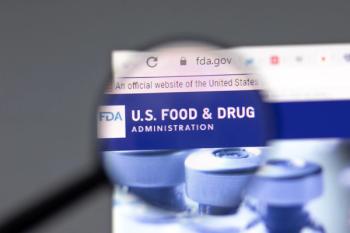
- Applied Clinical Trials-11-01-2009
- Volume 0
- Issue 0
Safety Requirements Slow New Drug Approvals
FDA reviewers strive to assess new postmarketing programs while also evaluating applications.
The Food and Drug Administration is struggling to implement a host of new drug safety policies and programs and still meet review goals set by the Prescription Drug User Fee program (PDUFA). Janet Woodcock, director of the Center for Drug Evaluation and Research (CDER), acknowledges a slowdown in drug approvals.
Jill Wechsler
The FDA Amendments Act (FDAAA) of 2007 added new requirements for assessing postmarket studies and determining the need for Risk Evaluation and Mitigation Strategies (REMS) at the time of approval, she explains, but with no extension in review times. CDER has hired more staff and is implementing new procedures to make the review process more efficient. Electronic submission and review systems for drug applications would help, but these innovations remain far from reality, and fewer applications are approved in the first review cycle.
In fact, the United States may be falling behind Europe in approving innovative therapies for patients. At a meeting in September sponsored by the Institute of Medicine (IOM) to evaluate safety initiatives established by FDAAA, Merck Executive Vice President Peter Honig noted that first-cycle approval trends are down and that user fee approval dates are "routinely missed" due to increased scrutiny of safety issues.
FDA is "clearly struggling" with postmarket safety demands, he said, suggesting that "drug lag" may be rearing up once more as European regulators approve some new drugs for market faster than FDA.
The approval slow-down is having a noticeable impact on drugs granted priority review status by the agency, a designation traditionally reserved for the most innovative and important new therapies. In the past, about 70% of priority review applications gained first-cycle approval, but this proportion dropped to 50% in 2008, according to a recent report from Parexel Consulting.
User fee approval targets are 10 months for new drug applications (NDAs) and six months for a priority application, and it's particularly difficult for FDA staffers to tighten up that six-month review process.
The good news is that manufacturers are submitting more NDAs to FDA and that the approval numbers are going up. Parexel cites 147 NDAs pending at FDA at the beginning of this year (2009), a notable increase from the 86 under review a year earlier. The number of applications for new molecular entities (NMEs) is holding steady, but the percentage enjoying first-cycle reviews is down.
Safety first
Implementing the FDAAA postmarketing safety requirements has turned out to be an enormous task for FDA and ever-more challenging for research sponsors.
CDER has approved 63 new REMS since March 2008: 47 require only distribution of Medication Guides for pharmacists to give patients; 10 REMS have additional communication plans that usually involve letters to health care professionals about product risks; and six REMS include Elements to Assure Safe Use (ETASU), which may impose restrictions on prescribers or patients, limit drug distribution or require patient monitoring.
The process of devising, proposing, and negotiating a REMS with FDA is complex and time-consuming, as seen in the long-awaited draft guidance on REMS content and format for innovator drugs, which FDA issued September 30, 2009.
The guidance describes how manufacturers should submit a REMS proposal to FDA that explains product risks, program goals, materials involved, and how and when the plan will be implemented. A REMS supporting document should provide more detail on program rationale and how elements and tools in the REMS will mitigate risks.
An important REMS component is a timetable for assessing the program after 18 months, three years, and seven years, or more often if warranted. There are detailed procedures for modifying a REMS after it is approved and adopted if goals are not met, and FDA may unilaterally modify a REMS if new safety or effectiveness information emerges. Assessment assumes that sponsors and FDA can devise ways to measure whether a REMS is effective or successful.
It's fairly straight-forward to conduct surveys, collect prescriber information or establish active surveillance programs, but much harder to assess how risk information actually influences prescriber and patient behavior.
The considerable time and effort involved in developing REMS programs raises the question of whether sponsors should propose a REMS on their own before filing an NDA, or wait and see if FDA determines that such a program is needed. FDA may consider the size of the patient population, seriousness of the disease, drug benefits, duration of treatment, and known adverse event profile in determining the scope of a REMS. Holding off on a proposal is risky because FDA seems to be requiring these programs for most NMEs, and developing a REMS during the application review period makes a first-cycle review very unlikely.
FDA officials advise opening REMS discussions at end of Phase II meetings to avoid unpleasant surprises later on.
Whatever tack a company takes though, it's important to get the details of a REMS right and to establish reasonable and practical goals and timetables. Sponsors face hefty fines for violating a REMS requirement (up to $10 million), plus the possibility of FDA pulling the product off the market.
Requiring postmarket studies
REMS assessments also include updated information on postapproval studies or clinical trials undertaken by the sponsor, including the status of the study, expected completion date, and whether any difficulties have been encountered in meeting set goals. This information similarly is provided in annual reports on postapproval studies, as required by FDAAA to address perennial complaints that pharmaceutical companies failed to complete agreed-on postmarketing studies in a timely manner.
Under the new law, FDA reviewers now have to determine the scope and timing of postmarketing studies as part of the application review process, instead of merely vetting study proposals from manufacturers.
Because some postmarketing studies are likely to involve thousands of patients, CDER plans to ask advisory committees to weigh in on acceptable trial designs, numbers of patients, and end points. These advisory sessions will address study designs for classes of drugs and not for each individual product, which would only extend approval times even more. The agency hopes that broader public buy-in for innovative studies may reduce second-guessing later on if postmarket research is delayed or changed.
FDAAA also authorizes FDA to require additional postmarketing studies for already approved drugs and to require changes in labeling when new safety information emerges. The agency sent out 14 letters requiring additional studies from mid-2008 to mid-2009, and issued 18 safety labeling notification letters during that period—additional tasks that tap agency resources.
Modernizing reviews
Woodcock hopes a 21st century review initiative at CDER will deal with these added challenges by better managing the process. The aim is to compress application review times upfront to provide more leeway at the end of the review to address safety issues and resolve internal and external disputes.
This is a considerable challenge, though, as the average NDA consists of 10 gigabytes of material; the data may no longer come in truckloads, but CDER reviewers still have to digest a massive amount of information.
CDER conducted a pilot program last year that reviewed 17 applications for NMEs under the new review process. The program is being extended to most NMEs and new BLAs (biologics license applications), with plans to streamline reviews for all applications and supplements by 2012.
The new review process involves upfront FDA meetings with sponsors to identify key issues. There are earlier internal deadlines for establishing multidisciplinary review teams, for identifying application deficiencies, and for reviewing product labeling. FDA will assess faster whether an advisory committee meeting will be needed, potential postmarket safety requirements and other possible "showstoppers" that could delay the approval process.
Jill Wechsler is the Washington editor of Applied Clinical Trials, (301) 656-4634
Articles in this issue
about 16 years ago
Applied Clinical Trials Digital Edition - November 2009about 16 years ago
Business and People Update November 2009about 16 years ago
Conducting Trials in Croatiaabout 16 years ago
Preparing for Postmarketabout 16 years ago
EDC Acceptance in Japanabout 16 years ago
To Market Faster In Silico Styleabout 16 years ago
Is an Investigative Site Shake-Out Imminent?about 16 years ago
Growth for Welsh Companiesabout 16 years ago
South Africa Todayabout 16 years ago
Health Issues Raise EU's Regulatory ProfileNewsletter
Stay current in clinical research with Applied Clinical Trials, providing expert insights, regulatory updates, and practical strategies for successful clinical trial design and execution.






.png)



.png)



.png)
.png)
